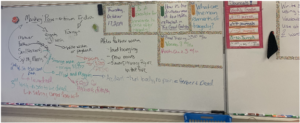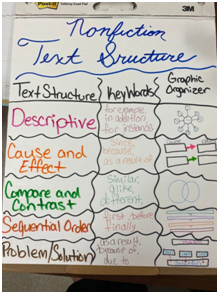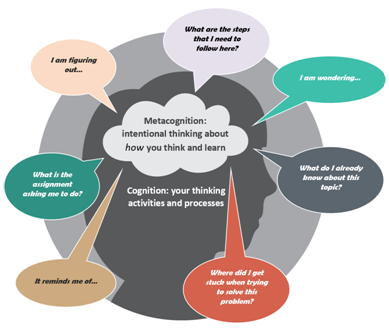Why is Reading Comprehension Important?
Reading comprehension is a skill that is necessary not only for students but for adults as well. It is a lifelong skill that is important for effective communication and citizenship in today’s society. Learning this skill early helps to foster an enduring love of reading and promote the effectiveness of language.
Improving Reading Comprehension in the Classroom
A key factor in reading and reading comprehension is fluency, the ability to decode words and recall them effortlessly while reading. When someone reads fluently they sound natural there are no harsh stops, no pauses as they struggle to sound out words that are unfamiliar. This skill is one of the first we are taught as students though we begin learning well before that. We learn our alphabet and the different sounds each letter makes, the differences between long and short vowels, voiced and voiceless consonants, and stressed and unstressed syllables. These are the foundational skills students are taught beginning Pre-K and kindergarten and focus on throughout their elementary careers.
Fluent Readers
Students who struggle with fluency, struggle with reading comprehension. They spend so much time focused on decoding that it is nearly impossible for them to understand and recall what they have read. It’s not necessarily that they aren’t focused on the text. These skills should be taught and improved upon at the elementary level so that students have a solid foundation moving forward to middle and high school.
Over the past few years I’ve noticed a change in the educational system through the effects on my nieces and nephew. The oldest are in the 9th and 7th grade, the younger in 3rd. I’ve seen classrooms moving away from phonics toward whole language. One of my youngest nieces (3rd grader) has difficulty reading and comprehending. When she reads aloud she fumbles over words, often time making up words or using the wrong word when she can’t decode. She was taught using whole language which focuses on context rather than breaking down words. This is not to say that phonics is superior and the whole language should be abandoned. Successful fluency comes from a combination of both. For more information on these approaches and for resources to help integrate them into your instruction visit Reading Horizons.
Give me a High 5!
For high school and middle school students sounding out words phonetically can seem childish so we as teachers must figure out how to engage kids in learning vocabulary and improving Reading Comprehension. One way of doing this is by using the High 5 method of reading comprehension. Teaching students these steps will help them systematically comprehend their reading.
- Activate Background Knowledge — You can do this by questioning students about their prior knowledge of the subject. This could be done via a graphic organizer (KWC chart) or by asking aloud.

- Questioning — As students read, ask probing questions that allow them to think critically about the text.I find the best way to do so is to ask and write student responses on the board, essentially creating class notes. I will sometimes do this on my Smartboard and save the files everyday so at the end of a unit students have a study guide with everything we’ve discussed. Oftentimes, I will write on my whiteboard because I will have something else on the Smartboard. Then I will take a picture and upload it to my class website. (see photos above)
- Analyze Text Structure — Looking at the way a text is structured can aid the reader in understanding the author’s purpose and intent. Be sure to review the differing structures throughout the year. A good way to do so is to post anchor charts around your classroom so that students are constantly reminded. (see photo left)

- Visualize — It is proven that the more senses are used the easier it is to relate to something. Help students use the imagery authors create to make pictures in their imagination. You can even take this a step further and have them sketch or doodle their visualizations.
- Summarize — Last, but by no means least, teach students how to summarize their reading. The ability to summarize proves that students can take the most important facts from a text and synthesis them coherently which is in essence reaching comprehension.
Make it Interesting
Students who are interested in the topic at hand tend to be more involved with their learning; they understand more because they want to. Teachers can easily play into this fact by choosing (or letting the kids choose) texts that appeal to their varied interests. In order to do this though, you must build relationships with your kids and know their likes and dislikes.
As a school we complete two current event articles each week using NewsELA. As the school account manager I am responsible for picking the article on Tuesdays (Thursdays are free reads). I try to rotate and pick articles that hit the curriculum my colleagues are currently teaching while being relevant. However looking through the data students tend to spend more time reading and score higher on the quizzes when I assign articles relating to popular culture. For example, in an article assigned about the death of Kobe Bryant, 24 of our 38 students completed the assignment with an average time spent reading 12 minutes and an average score of 75. On the contrary an article on the history of election day was completed by 16 students in an average of 8 minutes, and an average score of 50. The pop culture article captured the students’ attention so they focused more, resulting in better scores.

Thinking about Thoughts
Meta-cognition is the ability to understand your own thought process (i.e. thinking about thinking). This ties directly into another tip, modeling. When we model reading comprehension for our students we are teaching them how to think and how to process their thoughts. We teach them to question themselves and the text. Students who question as they read are more likely to understand and engage in the text. See the section on High 5 strategy to learn more on effective questioning.
To continue, modeling reading comprehension can take on a variety of methods many of which are discussed in this article. My favorite way to model in my class is using annotation and questioning. For example, my English students recently began reading Truman Capote’s “In Cold Blood.” We are listening to the audio-book in class but I continuously pause and discuss the novel as we read. My students are completing Cornell notes type sheets for each section. I have already posed the questions for them and as we read we discussed and I took notes on the board. (see photo) As we continue reading, I will still pause the recording, though, maybe less frequently depending on how they are understanding. I will also withdraw my note taking, writing only the most essential/ difficult points on the board. These strategies to help develop student’s annotations and note taking skills will serve them no matter what type of text they are reading. Besides Cornell notes, there are a variety of other methods of note taking. Personally, I typically like annotating on sticky notes that can be placed directly in the book, or writing directly on a text. Using this method students are able to organize and categorize their thoughts if you teach them how to label their notes (see chart). All three tips, meta-cognition, modeling, and note taking, can be combined to produce effective reading comprehension.
Tips for Adult Learners
Adult learners tend to shy away from reading because they were never taught effective strategies. However, reading comprehension is a lifelong skill necessary to productive citizenship. Below is a list of 9 tips that will help adults master reading comprehension.
- Practice — As with any skill, repetition aids in mastery. The more you read, the easier it is to understand what you’re reading.
- Take notes — Just like younger students, taking notes allows you to easily recall information you read previously.
- Study Vocabulary — A lot of reading comprehension comes from understanding the words written. The best way to learn new words is by studying vocabulary. Try things like a word of the day calendar.
- Lessen distractions — Find somewhere without lots of noise and activity (library perhaps) so you can focus easily on the text you’re reading.
- Skim Before You Read — This gives you an overview of what’s to come. Focus on headings and photos because you know these will be key in understanding the text.
- Get a Tutor or Helper — Ask someone for help. Unlike school age students, adult learners may not have the luxury of having a teacher. However, there are many websites that let you request tutors either online or in person. You can also ask friends or relatives for their help.
- Read Aloud — When you read something aloud you are employing 2 senses sight and hearing. It lets you easily make connections as you read because our brains are wired to connect more with what we hear.
- Reread — Don’t be scared to go back and read a text again. Repetition aides in understanding and comprehension.
- Know your Purpose — Why are you reading? Is it for your job? For your pleasure or entertainment? This will lead you to know which questions to ask yourself as you read.
Wrap Up
Overall, the methods that we use in elementary school can easily be translated into effective strategies for both high school and adult learners. Most importantly, however, it is to instill that reading comprehension is a like time skill for all.



